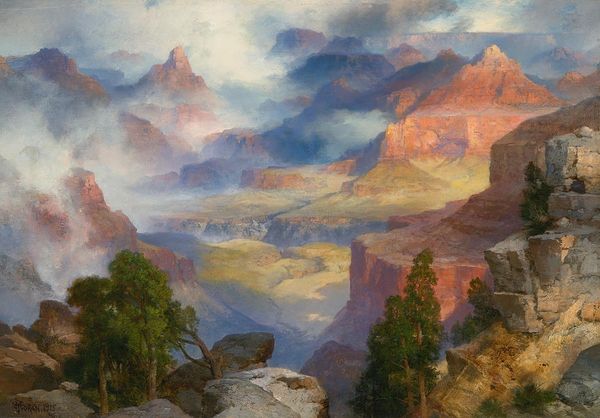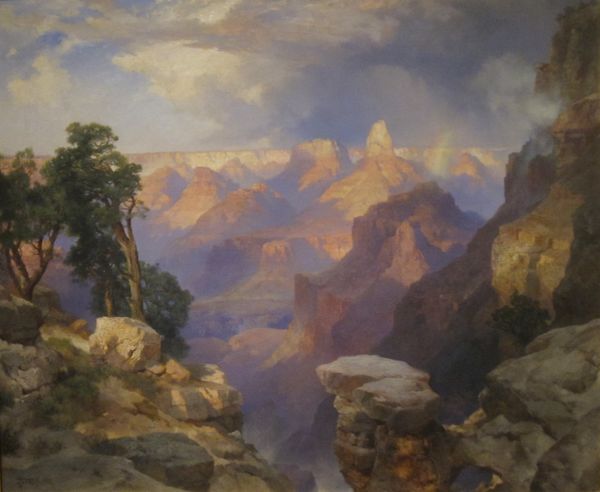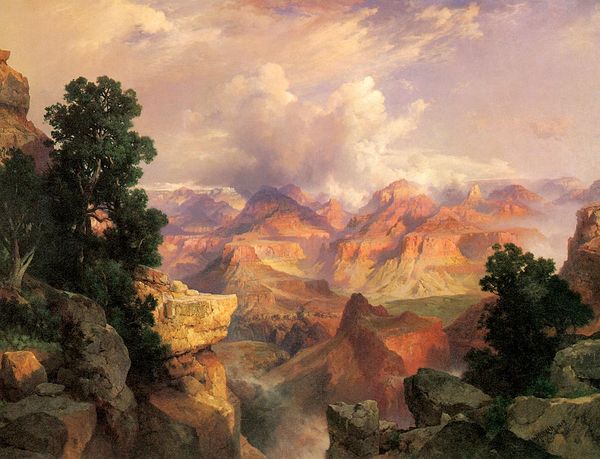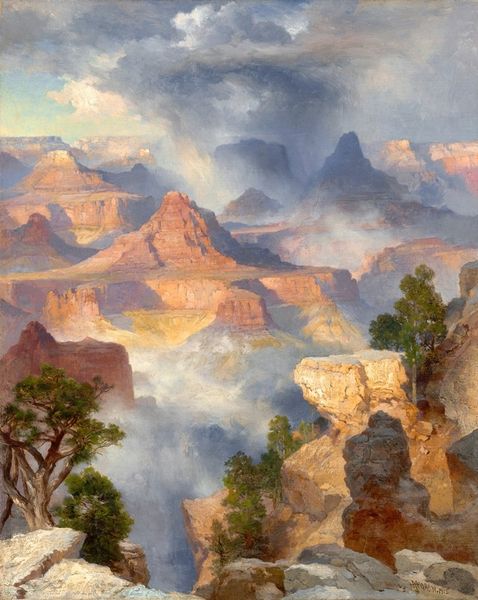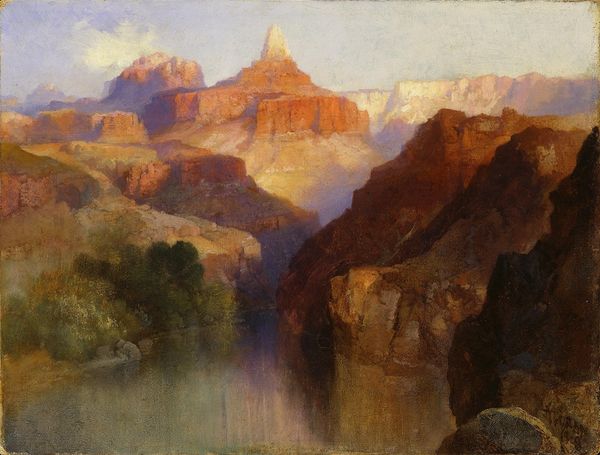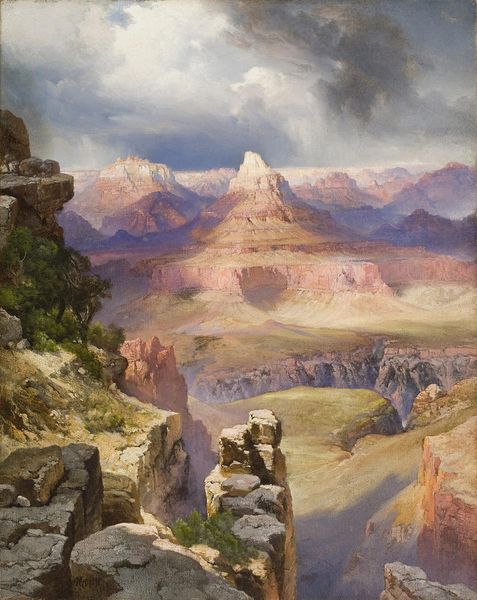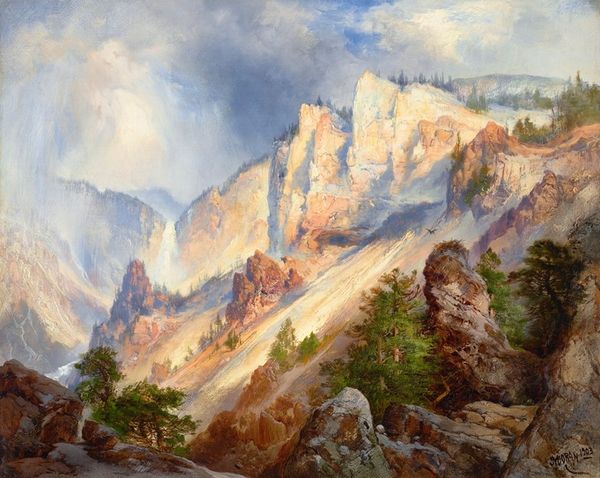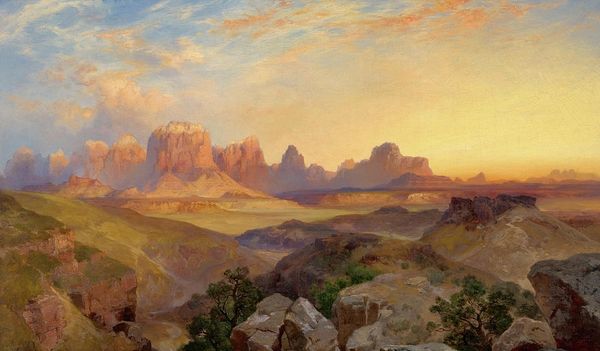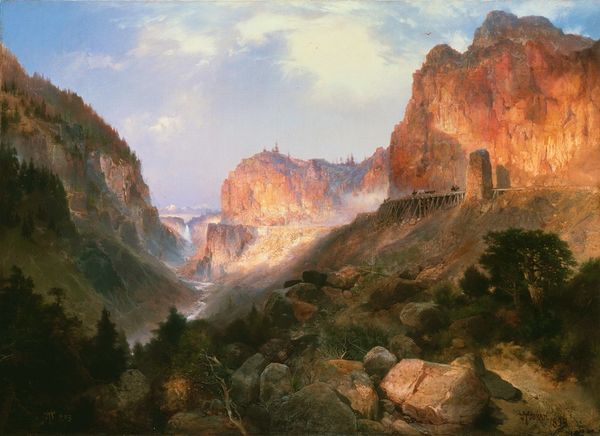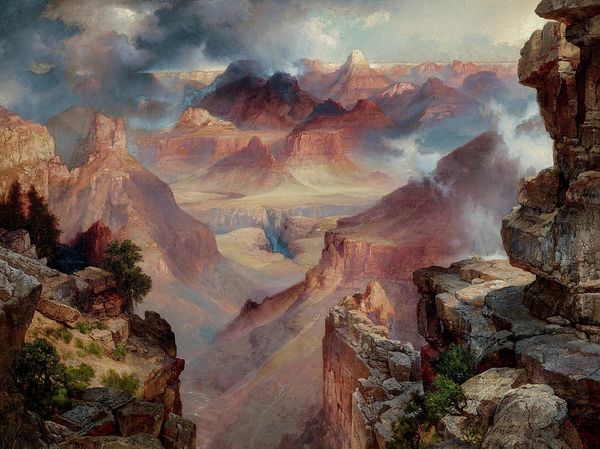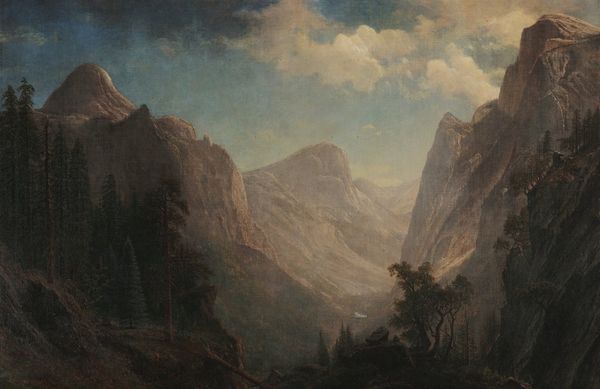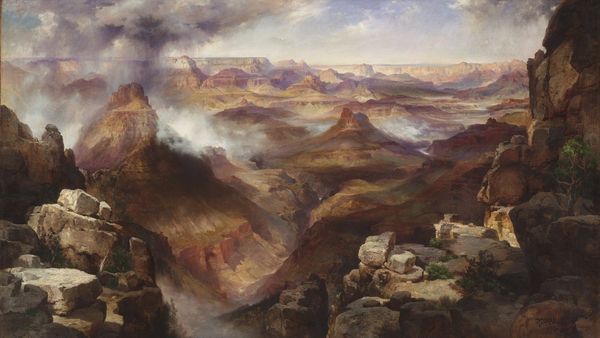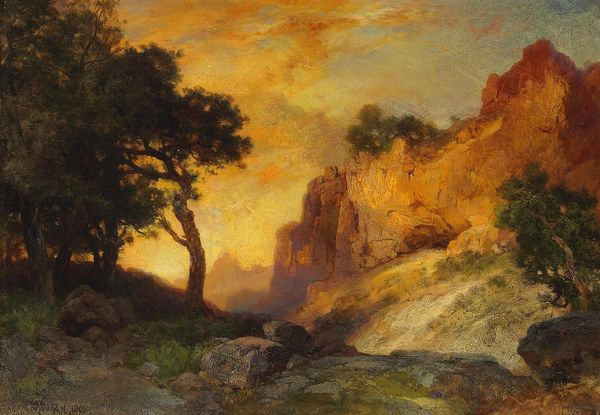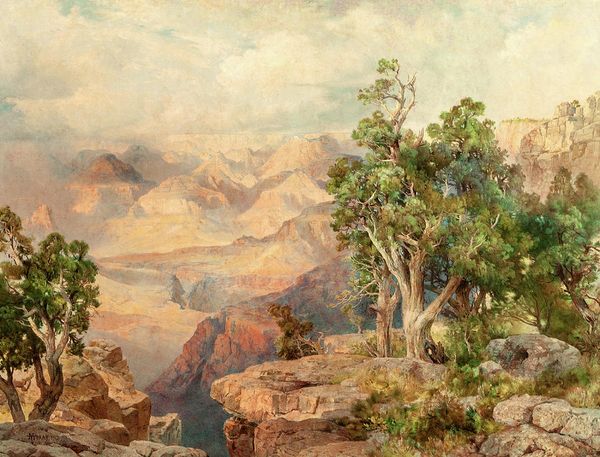
Dimensions: 51.4 x 77.8 cm
Copyright: Public domain
Editor: This is Thomas Moran’s "Grand Canyon," painted in 1920 with oil paints en plein-air. It's beautiful, a sort of monumental haze. What do you see in this piece, beyond the initial vista? Curator: It’s tempting to just see picturesque beauty, isn’t it? But let's unpack the socio-political context. The late 19th and early 20th centuries were crucial in the history of American expansion and nationalism, heavily tied to Manifest Destiny. How do you think an image like this functions in relation to that? Editor: I guess it kind of romanticizes that whole idea… like this vast, untouched land is just waiting to be ‘discovered’ and, inevitably, conquered. Curator: Precisely. Moran wasn't just painting a pretty picture; he was visually legitimizing a narrative of entitlement, effectively erasing the presence and history of Indigenous peoples who had inhabited that land for centuries. Does the style – that romanticized landscape – contribute to this erasure? Editor: Definitely. The soft focus and golden light almost feels like a deliberate attempt to mask the violence inherent in that ideology. The beauty becomes a smokescreen. Curator: Exactly. It presents a vision of a 'virgin land' ripe for the taking. This connects with contemporary concerns about environmental justice. Consider how this image may influence policy decisions related to resource extraction, land use, and indigenous land rights. Understanding this helps us approach it critically, seeing it not just as art, but as a historical document that continues to resonate today. Editor: I never thought about landscape painting having that kind of impact. Thanks, this was super enlightening. Curator: Likewise, thinking about these contexts helps unpack the complexities in our viewing experience, creating opportunities for more ethical engagements with art history and its ties to current events.
Comments
No comments
Be the first to comment and join the conversation on the ultimate creative platform.
